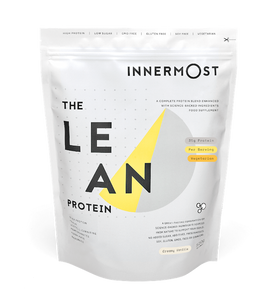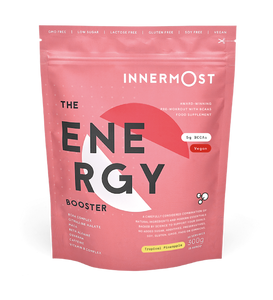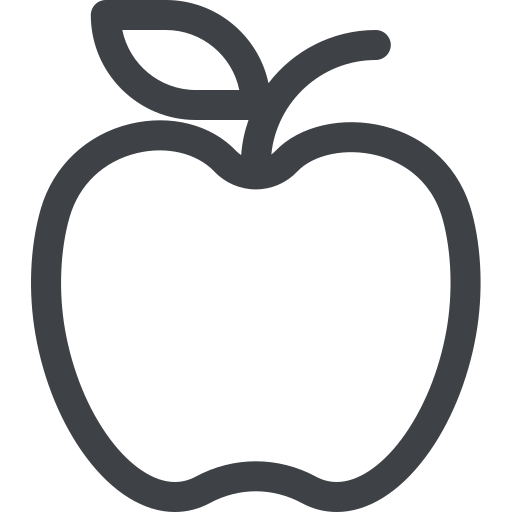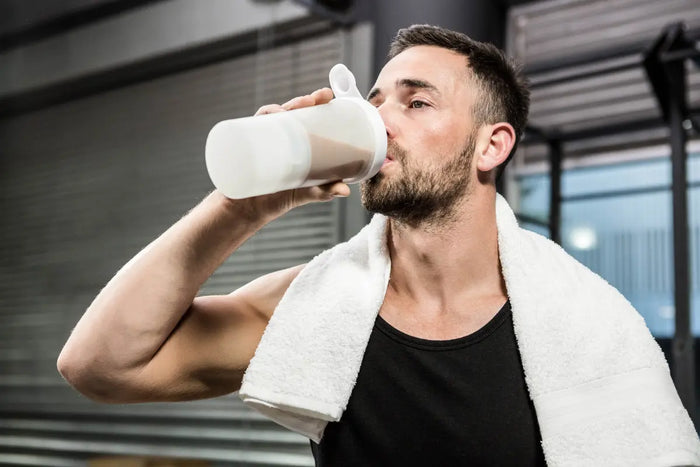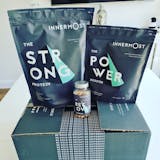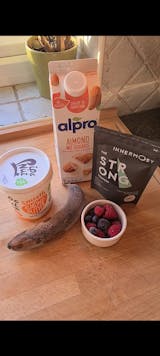Hi Innermost HQ! Kimberly here.
So many people research around how to be more flexible, due to benefits such as increased body-positivity, greater performance and boosted energy levels.
So, In an effort to introduce you to yoga, I’ve created this 30 day flexibility challenge! Whether you’ve been practicing for years or never rolled out a mat before, this challenge will get you on track to a happier, healthier routine.
Over the next 30 days, this challenge will help improve flexibility, reduce stress, burn calories, build overall strength, help with balance, and my favourite... create a sense of self-acceptance.
Kimberly Recommends
During my 30 day challenge, I'll be using Innermost's The Lean Protein superfood protein blend.
This is my protein of choice as it contains nourishing protein along with the right blend of ingredients that help metabolise fat and antioxidants to get my body rebalanced post-workout.
I'll also be using The Tone Capsules dietary booster capsules, which contain Matcha Green Tea, yerba mate and a bunch of really interesting ingredients to encourage my metabolism to burn more calories while working out.
Go for The Lean Collection and you'll have everything you need for the next 30 days.
The 30 Day Challenge
The first thing to do is determine your backbend capability. If you're new to yoga, listen to your body and don’t try to push yourself anywhere uncomfortable.
Start by lifting up into the “wheel-pose”. Laying on your back, bend your knees bringing your heels towards your bum. Plant your hands on the ground next to your ears, fingertips pointing towards your toes, elbows facing towards the sky. Inhale, push into your hands and feet, lifting your hips.
This is your wheel pose. Don’t judge it, just take notice and take a picture! Throughout the next 30 days we'll be working on shoulder strength and mobility as well as back-bending, so remember to photograph yourself each day to keep track of your progress.
Each week we’ll have a different pose that is geared to opening and strengthening our shoulders, spine and upper body. We ask you perform each pose routine during the week twice during your day - ideally once in the morning and once in the evening.
Week-by-week
Week 1: Downward facing dog!
Begin in plank pose. Grounding down through your hands and balls of feet, lift your hips to the sky. This is your inverted letter V shape. Push the ground away with all 10 fingers and push your heels towards the ground. Your gaze is at your belly button (to create length in your spine), your belly is sucked in and engaged. Hold this for as long as your breath allow. Steady inhales and exhales.
Week 2: Forward fold with clasped hands!
Begin standing tall, feet wider the hip distance rooting into the ground. Clasp your hands behind your tailbone, palms touching. Pull down on an inhale. Exhale, leading with your heart, fold forward. Breathing here for 5 minutes.
Week 3: Bow pose!
Laying on your stomach, arms by your side palms facing up. Exhale bend your knees and reach for your feet. Inhale kick your feet to the back of the room still holding a strong grip with your hands. Hold 5-10 breaths and exhale while lowering down.
Week 4: Reverse table top!
Sit on the ground, bend your knees planting your feet on the ground. Plant your hands on the ground, just behind your bottom (fingertips pointing towards your feet). Lift your hips to the sky so that your body is parallel to the ground, lean your head back, breathe here, open your chest, push down through your fingers, engage your abdomen legs and glutes. Repeat for a total of 5 minutes.
TA DA!
You’ve completed your 30 day flexibility challenge! The final thing to do is get back into the wheel pose that you did at the start of the challenge, take a photograph and compare the new image to the image you took at the start. Notice the difference?

